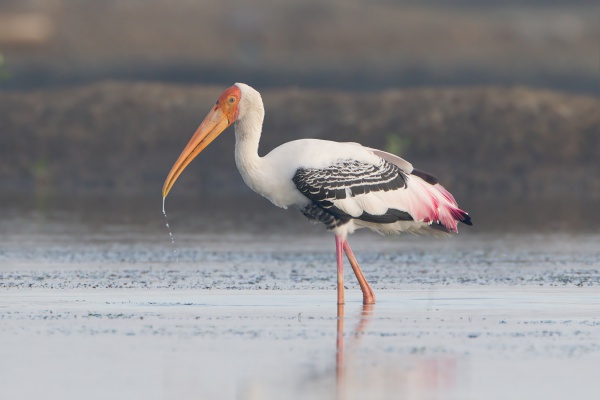Facts About Painted stork
The painted stork is a striking bird commonly found in the wetlands of tropical Asia, particularly within the Indian Subcontinent and Southeast Asia. These large waders are easily recognizable by their distinctive pink tertial feathers. They wade through shallow waters, sweeping their beaks side to side to catch small fish.
These birds are often seen nesting together in colonies, usually in trees. They typically do not migrate far, only moving short distances to find better weather or more food.
Physically, painted storks are quite distinctive. They have a heavy, yellow, down-curved beak and an orange or reddish bare head. Their black breast band with white markings is also a notable feature. They are medium-sized birds, standing about 93–102 cm tall and weighing between 2 and 3.5 kg. Young storks have brownish feathers and take about two to three years to reach breeding age.
These storks are found across Asia, favoring freshwater wetlands. They usually feed in groups, hunting for small fish, frogs, and sometimes even snakes, primarily during daylight hours. Their breeding season starts in the winter months following the monsoon rains. They construct their nests in trees, forming large colonies. A typical clutch consists of one to five eggs, which take about a month to incubate. The chicks usually fledge around two months later.
Painted stork nesting colonies have become popular tourist attractions. Conservation efforts are ongoing in places such as Kokrebellur and the Delhi Zoological Park in India. However, the species faces challenges in regions like Pakistan, Thailand, Cambodia, and Vietnam, where they are endangered. There are also concerns about hybridization with related species like the milky stork and lesser adjutant stork.

 India
India